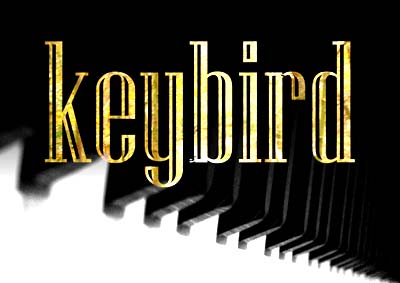|

KEYBIRD is an interactive installation comprising of a musical keyboard that instead of playing musical notes, has a different birdsong
on every key. The work was created in response to a commission for the East Sussex Wildlife Weekend and has since been shown in The Netherlands and in
France.
The simplicity of Keybird means that it comes across as very accessible to people of ages. Upon entering the space visitors see
the musical keyboard and are drawn to playing some of the notes. After a brief moment of surprise and puzzlement, whilst the
connection is made with the birdsong that results from the pressing of the keys, an exploration of the instrument ensues. As
players contrast and compare the different calls and compose imaginary dawn choruses, they move between the roles of observer, as
they identify the different species through their different musical signatures, and that of composer as they treat the calls as
musical phrases in their own right.
The installation creates for its users a lighthearted yet deep connection with bird song in general, and by extension the
soundscape. As the Keybird notes are physically played a mental connection with the sound is made, with the result that sounds
are subconsciously ‘lodged’ in short-term memory, with the effect that listening is heightened, at least for a short while. The
installation gives time to its players to enquire, to play and to share the sounds, preparing the mind for an enhanced listening
experience. Players of Keybird notice that they will begin to hear the detail in the different bird calls as well as hear
sounds they never heard before, and the world will never quite sound the same to them again.
The birdsong featured is taken from the observational notes made by a Rye Harbour RSPB Warden over the course of one bird-watching
year, and so is representative of the range of birds that can be found in the South of England. The calls of 76 different birds
are arranged in alphabetical order along the keyboard and the visitor is left to experiment with playing the different notes, to contrast and compare and to
compose their own compositions. Separate versions of the work exist for French, Flemish and German languages.
|